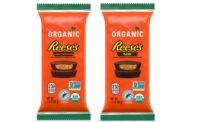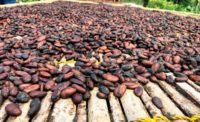Health trends tend to shy away from the sugary sweet, but this time, rising health awareness is bringing customers to chocolate — particularly dark chocolate.
Transparency Market Research's latest market study shows that consumers' growing health awareness is propelling the global chocolate market and pushing it toward extensive growth. Their analysts attribute it to the fact that cocoa-rich chocolate possesses a huge amount of antioxidants that can help prevent cardiac disorders and other diseases.
Of the three types of chocolate — dark, milk and white — dark chocolate leads the global market and is expected to stay in its top spot over the next few years. And the health benefits offered by dark chocolate's high cocoa content is expected to drive the market segment significantly.
That doesn't mean milk chocolate isn't also making a push, though.
According to the report, milk chocolate is also witnessing extensive growth in its market share. It's expected to keep posting high growth rates in the coming years thanks to the advantages it offers — namely, similar health benefits from cocoa paired with a sweeter taste for consumer satisfaction. Milk chocolate is also considered a healthier alternative to sweets with high cholesterol.
The trend toward health and wellness has had a significant positive impact on the global chocolate market in recent years, but the high cost of raw materials and unstable economic conditions in cocoa-producing nations hampers the growth of the market.
Asia Pacific biggest global player
Globally, the chocolate market is distributed between four regional markets: North America, Asia Pacific, Europe and the rest of the world.
The Asia Pacific regional market is the biggest player, with 20 percent of the global market.
Within Asia, Japan leads with 40 percent of the Asia market. Analysts attribute the Asia Pacific region's large chocolate market to the growing influence of Western culture paired with the increase in disposable income for emerging countries like India, China, Korea and Japan.
Although Cadbury and Nestle are the leading players in this region, Hershey, Mars, Ferrero and Ghirardelli have also found footing in the market.
North America is the second-biggest regional player, with the United States accounting for 80 percent of that region’s market. Meanwhile, the United Kingdom leads the European market with a 16 percent share.
Thanks to the vast base of market participants, the worldwide chocolate market is both competitive and highly fragmented.










